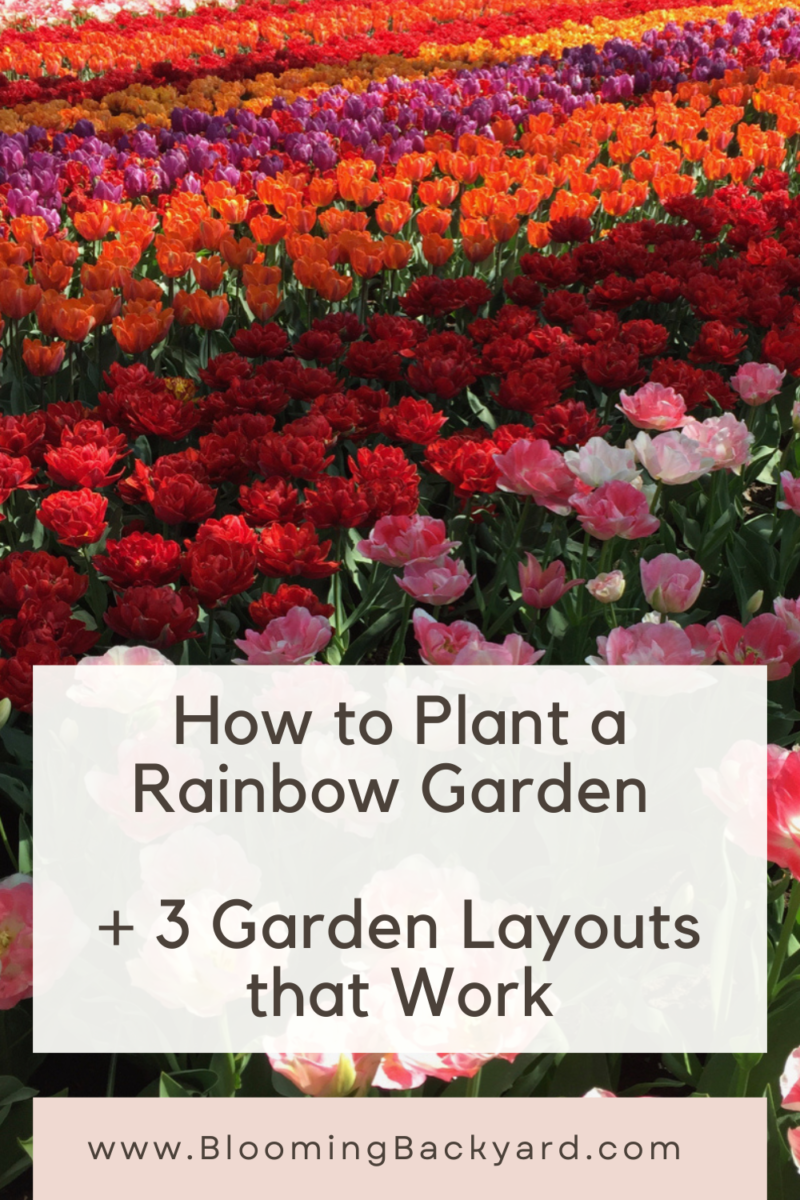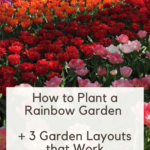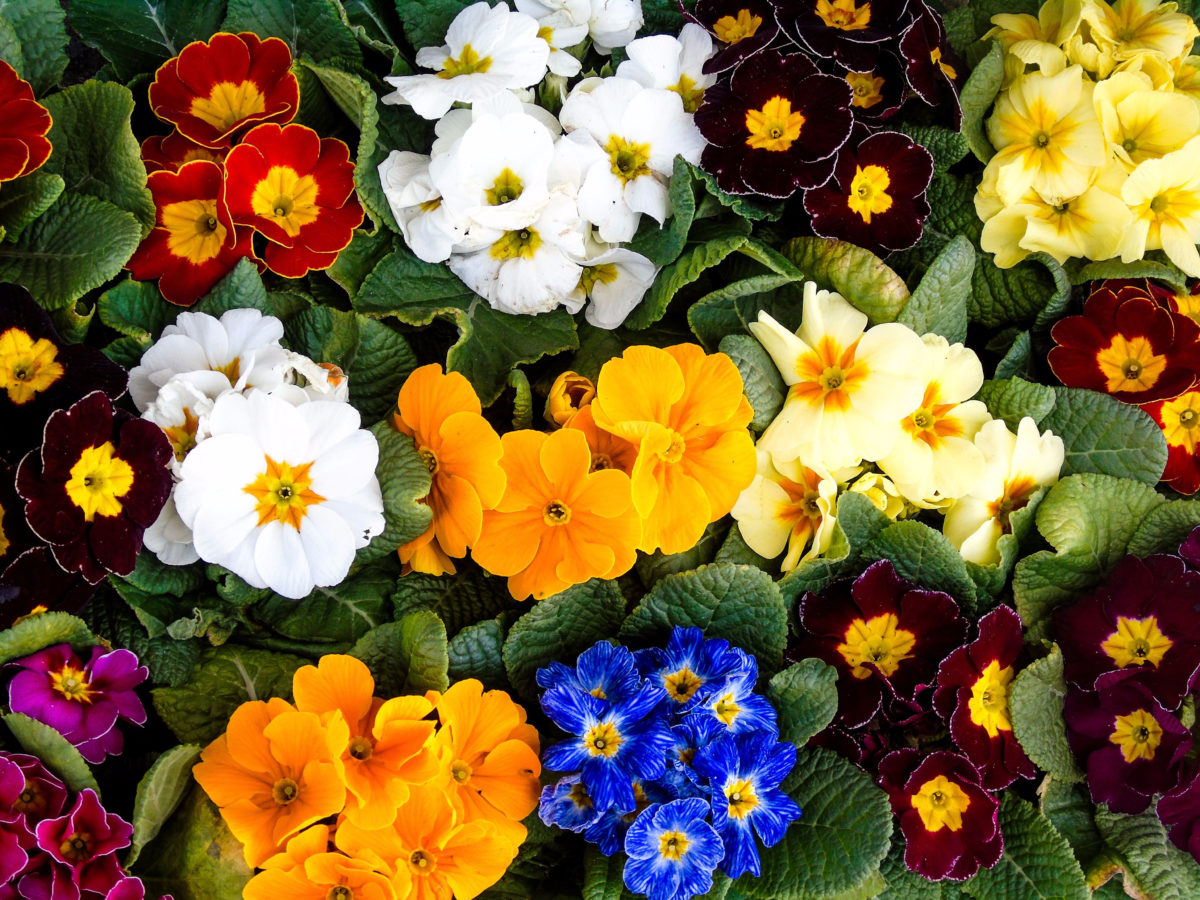
Ever since its release in 1988, the children’s book Planting a Rainbow by Lois Ehlert has been one of the favorite means for green-thumbed parents to instill a love of gardening and nature in their children.
Undoubtedly numerous rainbow gardens have been started (and some forgotten) by kids eager to get their hands dirty and their seeds in the ground
A quick search for “how to plant a rainbow garden” reveals activity sheets, lesson plans and other projects you can do with kids. But how about planting a rainbow garden for adults to enjoy? Here’s a guide on how to do it and what plants will help you achieve the desired effect.
What is a rainbow garden?
Aren’t most gardens supposed to be colorful anyway?
Yes, but the main attraction of this design is not just the fact that it brings colorful flower beds into focus. A rainbow garden is a garden where the plants have been arranged to resemble the colors of the rainbow, both in order and (sometimes) in shape. So think of arch-shaped garden beds that follow the ROY G BIV mnemonic (red, orange, yellow, green, blue, indigo, violet).
For some gardeners, that’s the main attraction; for others, it may sound like a headache waiting to happen. But with a little bit of planning, a rainbow garden isn’t hard to achieve, even during a single growing season.
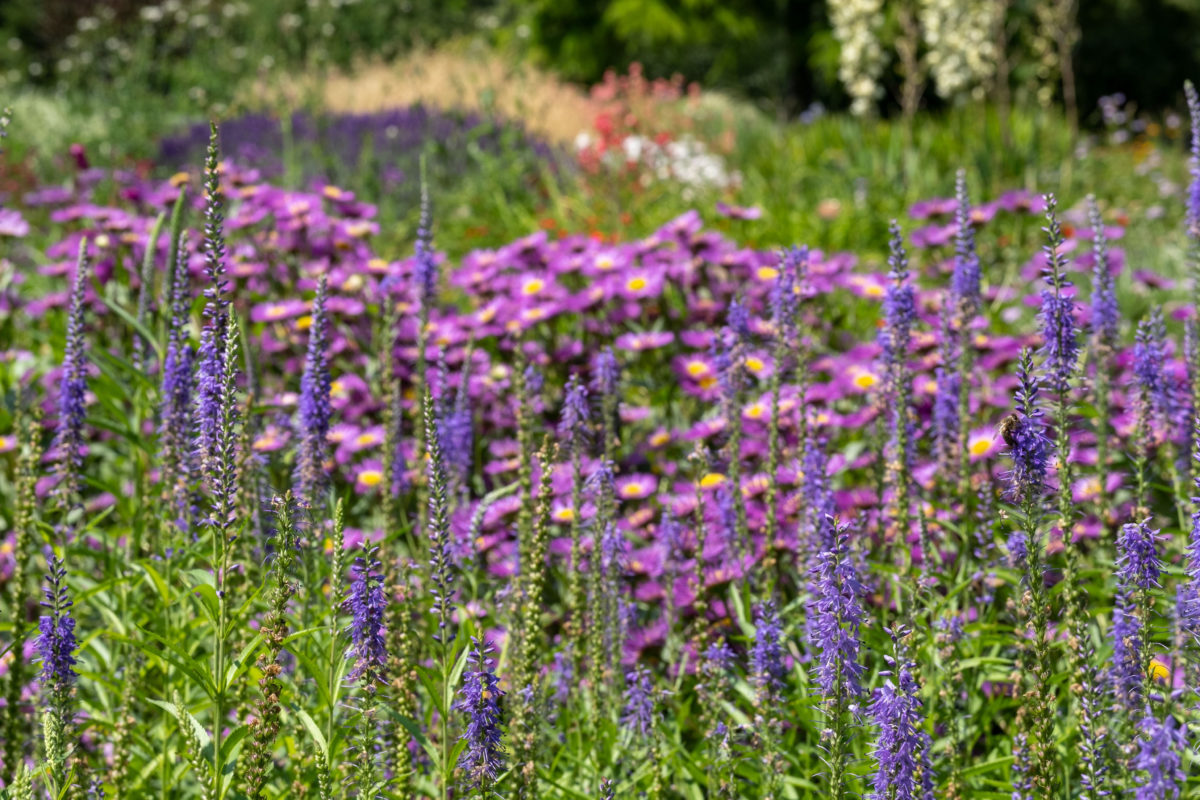
And the most important part of creating a new garden design is letting your creativity roam freely – or at least as freely as your planting site allows. You don’t necessarily have to follow an arch shape if planting in groups would look better in your space. Just as you don’t have to follow the colors of the rainbow in order. And you’re definitely allowed to play a few eye tricks with the blue-indigo-violet combo. Nature sure does!
How do I plan a rainbow garden?
The key to getting a rainbow pattern in your garden is proper planning. That’s why a rainbow garden, like any design from scratch, is best started on paper rather than in situ.
First, decide what kind of rainbow garden you’d like to commit to: a spring bulb garden, an annual garden or a perennial garden. I’ll expand on the pros and cons of each of these below, so you can skip this step (for now!) and come back later. However, don’t skip on the planning-on-paper process before you start digging into the ground.
On a piece of paper, sketch out how you’d like your rainbow garden to look, keeping in mind a few questions.
How much sunlight will your rainbow patch get?
How often are you prepared to water it to keep the “`Wow! factor” fresh?
Will passers-by be able to admire it, or is it for your own private viewing?
Do you want to keep it a subtle affair, or are you going all out with this design?
How much maintenance are you willing to commit to?
Do you want to plant the flowers in order of color, or mix and match them a bit to keep it interesting?
Here are three possible layouts for the rainbow garden to get the ideas rolling.
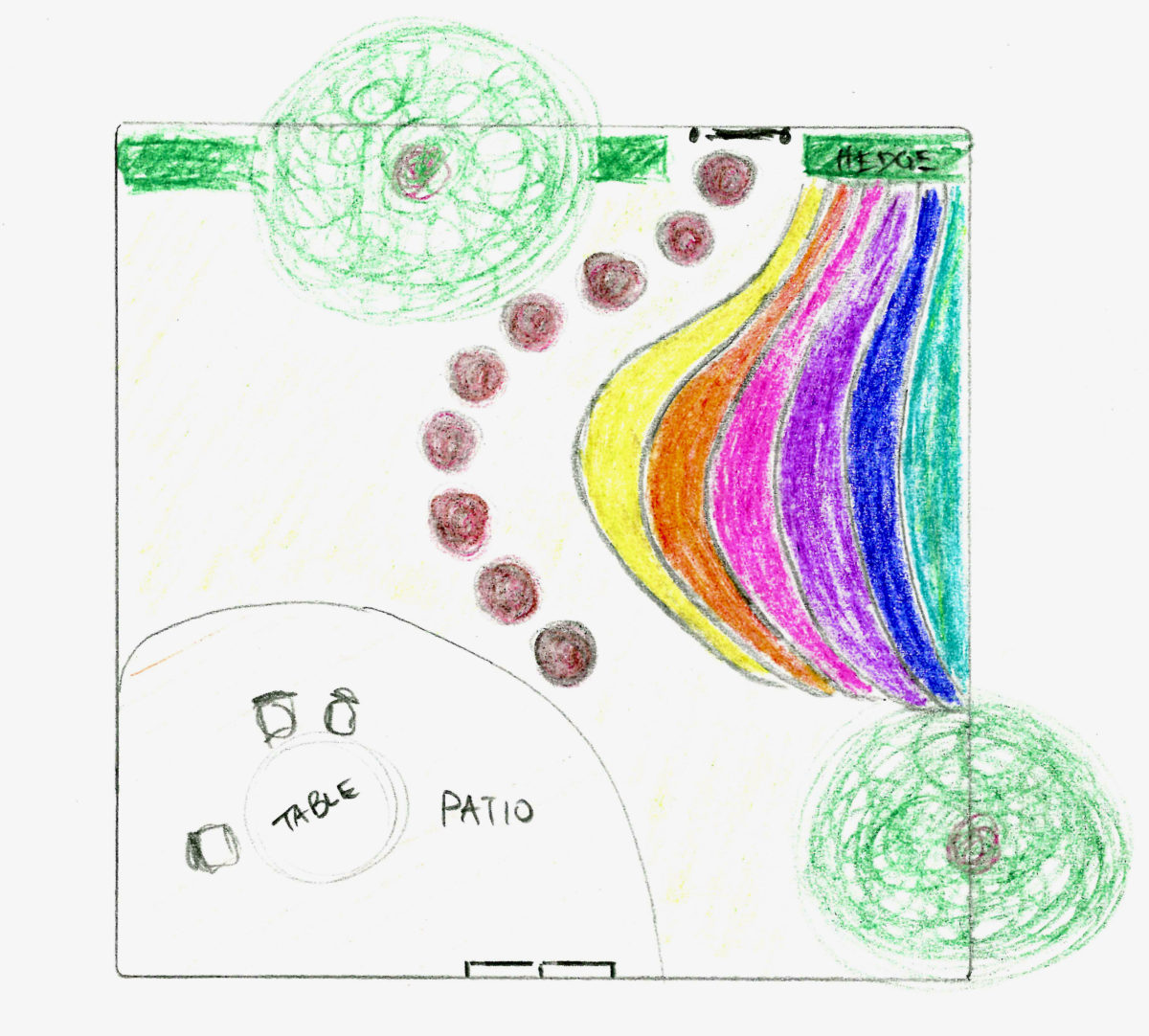
Layout 1: The arched rainbow garden is designed as a side feature in the spot that gets the most amount of sunlight.
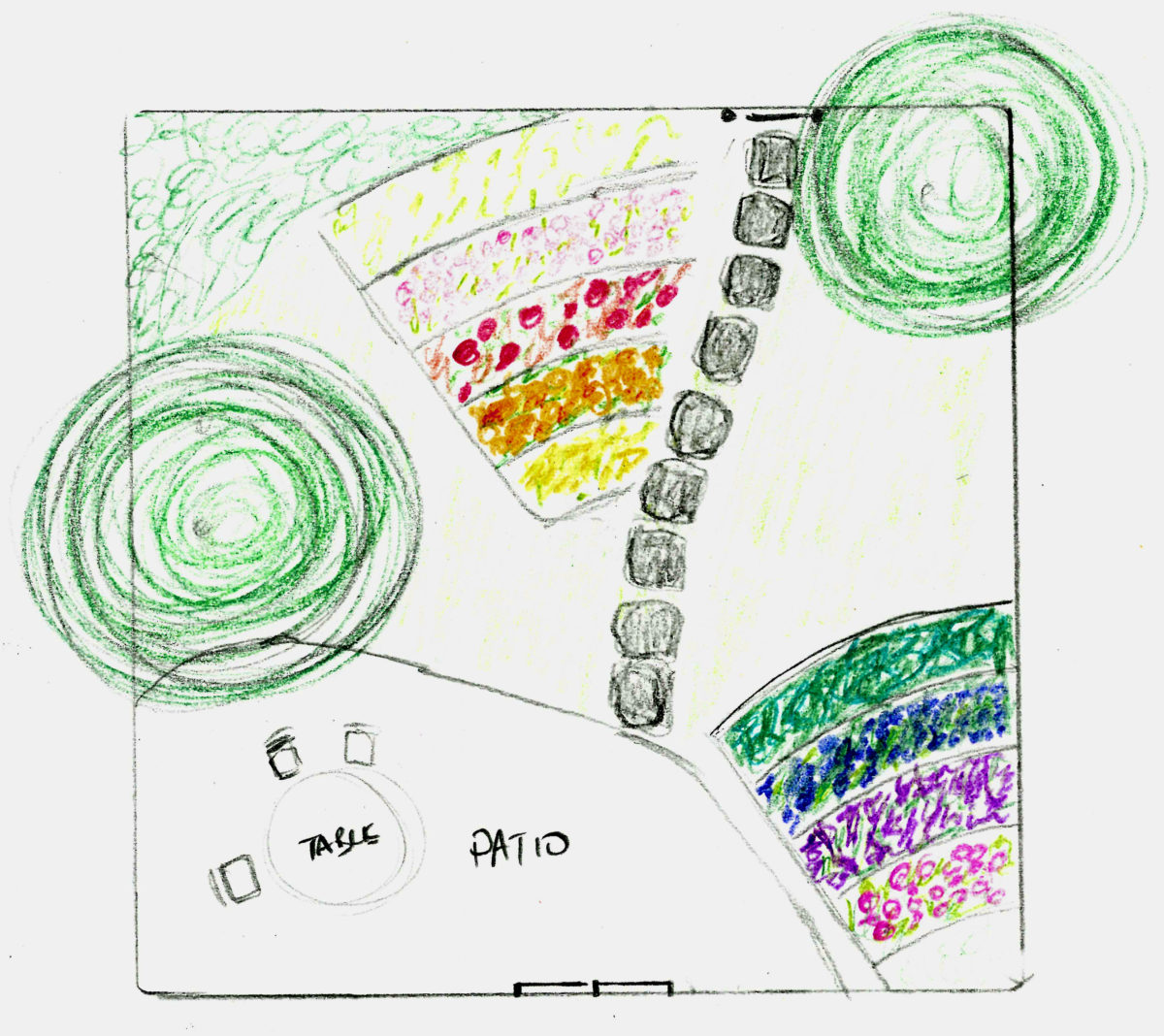
Layout 2: You’re fully immersed in the rainbow garden as you walk along the path and every row is within reach.
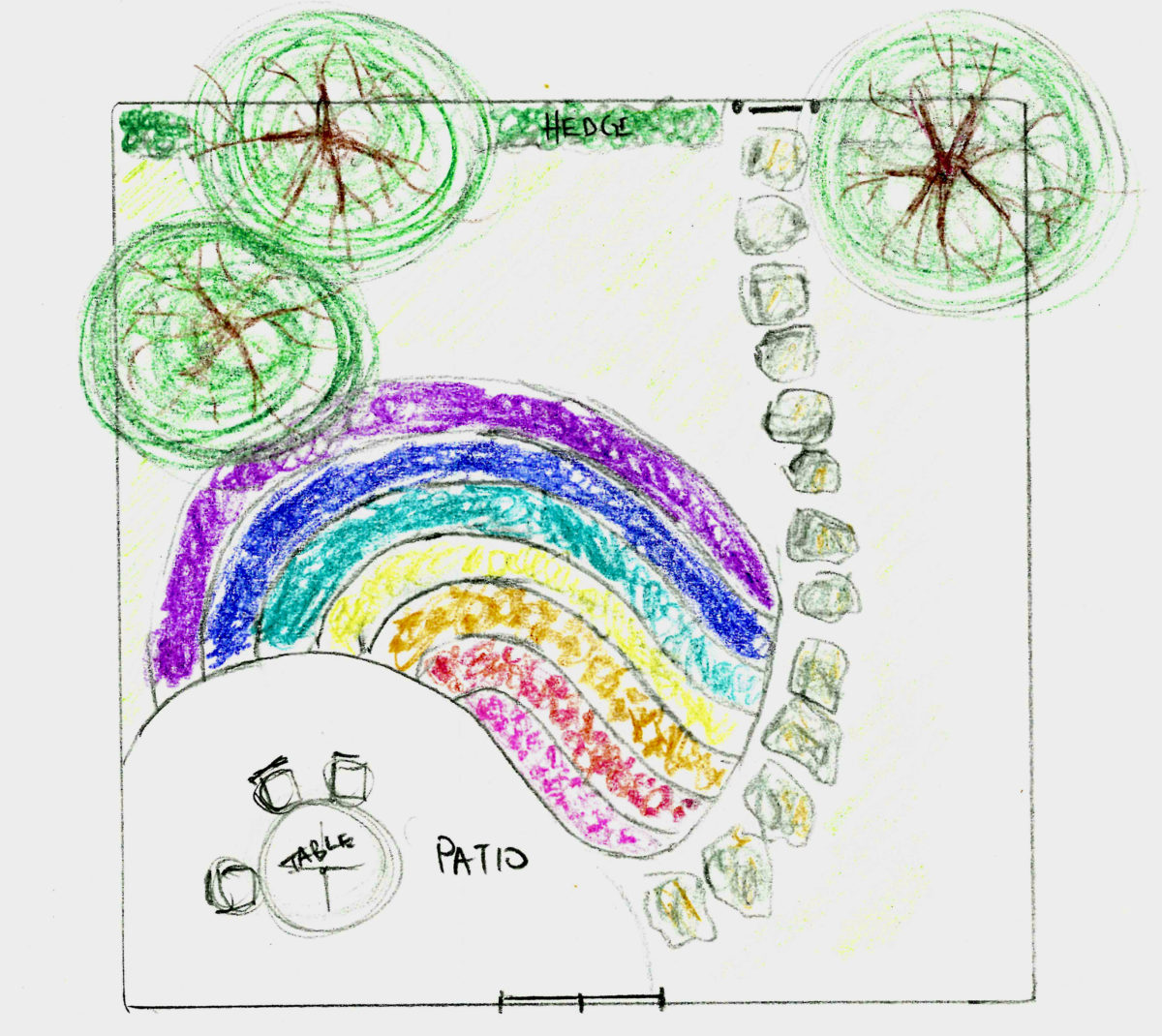
Layout 3: The rainbow garden acts as a natural enclosure and privacy screen for the seating area.
Here are four more tips to keep in mind throughout the planning stage:
1. Choose plants that have roughly the same blooming time.
This depends a lot on the climate you’re gardening in, and what type of plants you’d like to grow in your rainbow garden. But you surely don’t want some blooms gone (or even worse, crispy brown) while others still haven’t opened yet.
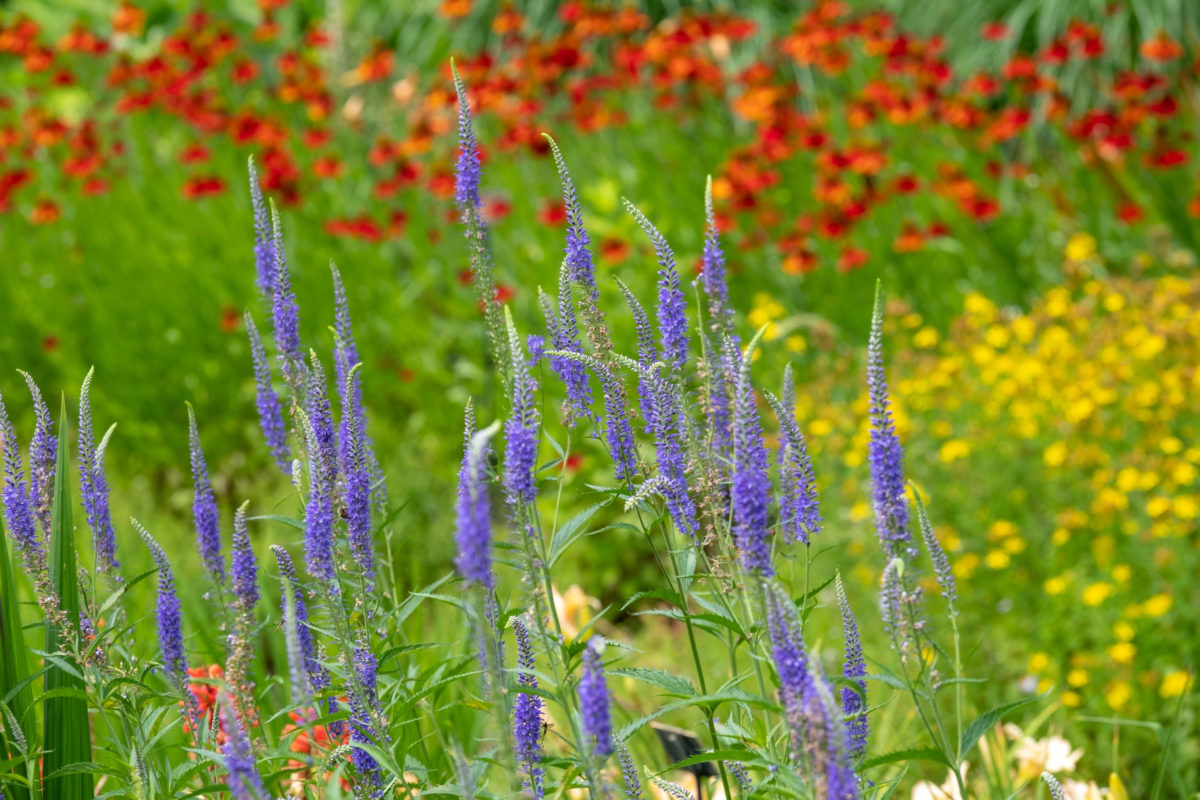
For maximum effect, you should choose plants that are in bloom at the same time. This should be a fairly easy choice if you stick to the same kind of plants – for example, you’re more likely to achieve a wave of blooms effect if you plant summer perennials only, or spring bulbs only. Planning gets a bit more complicated if you decide to mix and match, especially bulbs and perennials.
2. Consider the height of plants at maturity.
This is one of the main reasons why you may have to adjust the color order when you’re planting in drifts. Think of it as stadium-style planting, with the tallest plants in the back and the shortest plants in the front seats. In other words, you wouldn’t want your delphiniums to overshadow your calendula, nor your lupines blocking your geraniums from sight.
3. Consider the foliage.
Some plants have beautiful blooms that would work well in a rainbow garden, if only their foliage weren’t too dense. So plants such as nasturtiums, for example, have a high foliage-to-bloom ratio that would visually be in the way if you’re going for the rainbow effect.
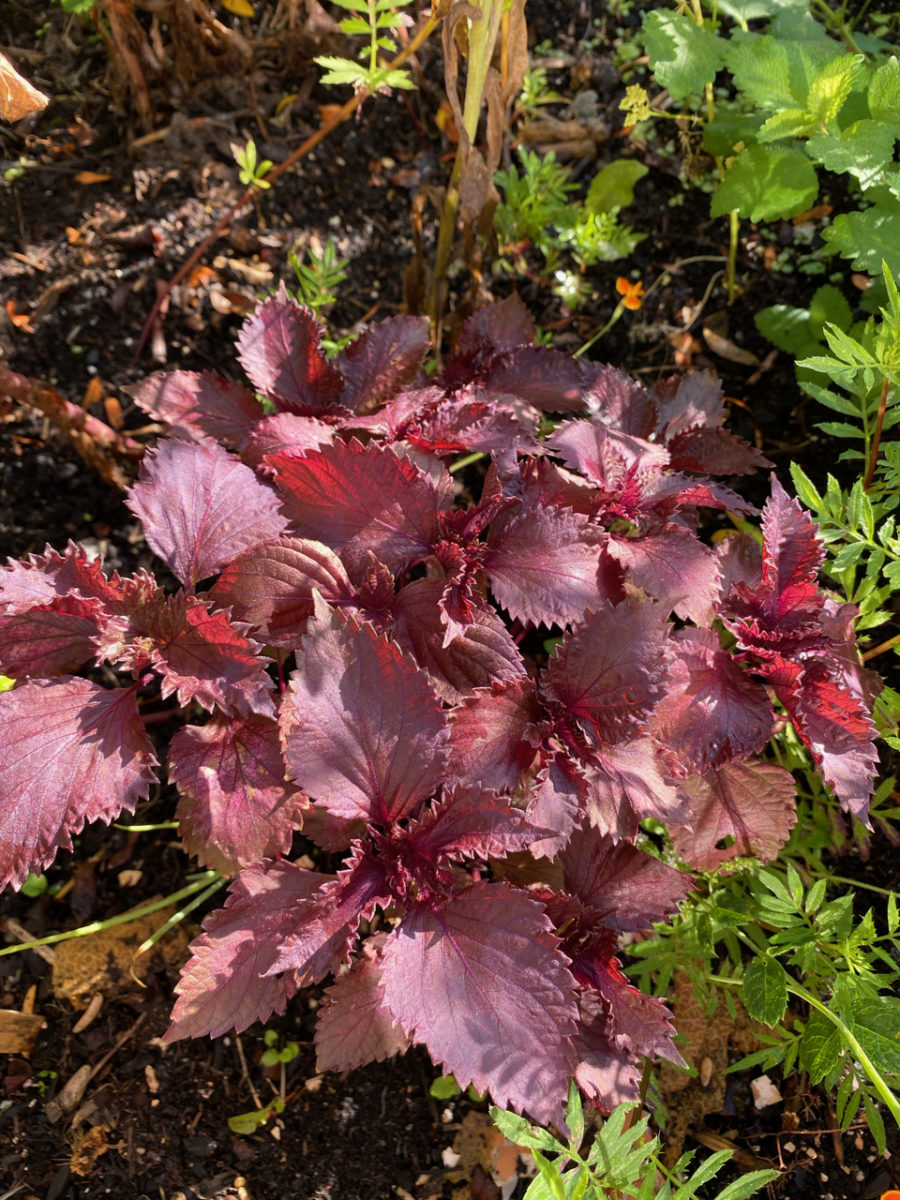
Speaking of foliage, you can use plants with colored foliage as a substitute for colorful blooms. Plants such as canna, heuchera, coleus and cordyline have stunning leaves that could compete in any plant beauty competition.
Shiso purple cress is not only a tasty herb, but its foliage stays purple all summer long
4. You can start small and test your theory by planting a rainbow container.
This is a little bit of a cheat, but it’s a good way to see what plants go well together, not to mention test your commitment to turning your garden into a rainbow.
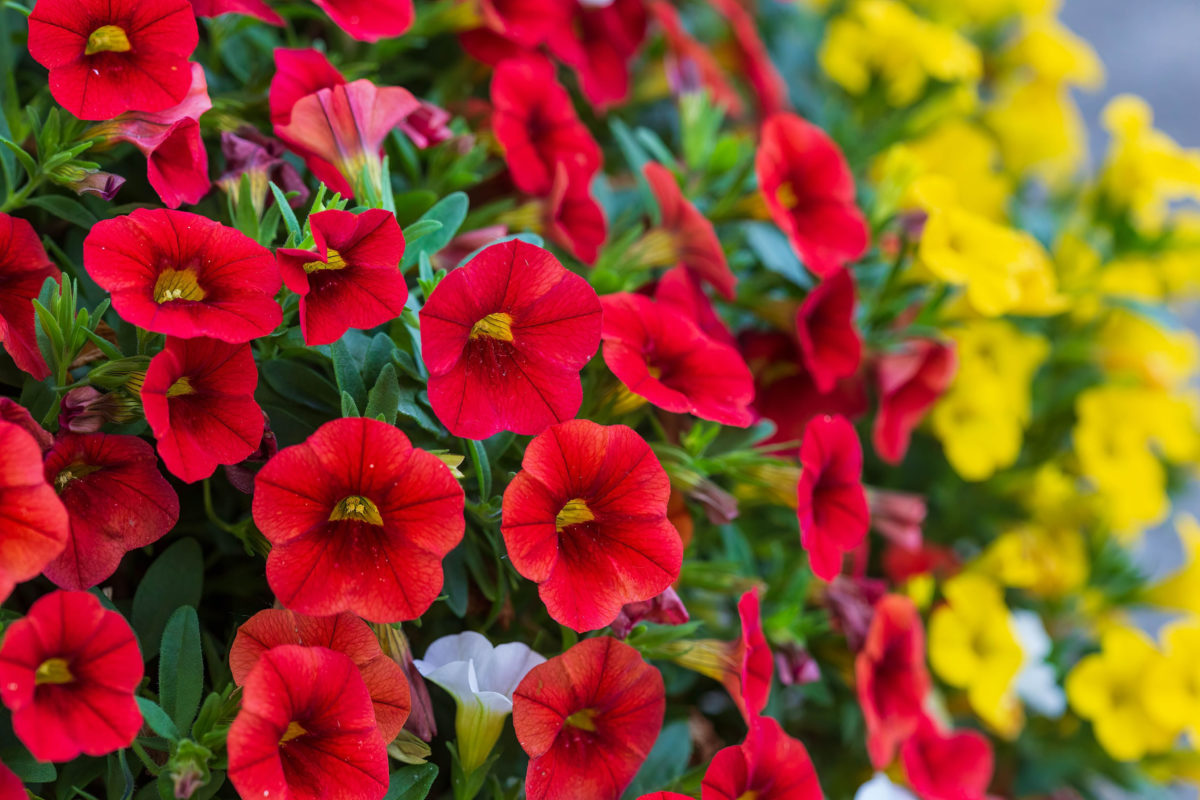
You can either plant a rainbow container garden in the same pot – with all the blooms sharing the same space. Or you can divide the containers by color, following the one color per pot rule until you’ve planted seven colorful containers that you can rearrange depending on which one you want to take center stage.
Should my rainbow garden be annual or perennial?
Good question. Here are some pros and cons of each to help you decide:
1. Creating a spring bulb rainbow garden.
Pros: I chose to start with the spring bulb option because it has the best of both worlds: you will plant bulbs every fall (the annual aspect), but you can also reuse the bulbs for several years in a row (the perennial aspect).
Another advantage of spring bulbs is that they are widely available in a variety of colors, and they’re reliable bloomers (you’ll rarely find a dud). And perhaps more importantly to achieving a rainbow pattern, you can time their bloom time with more accuracy compared to perennials.
A spring bulb garden is easy to plan and planting goes fast if you’re using a bulb planter.
Cons: You will have to replant your rainbow every season if you choose to dig out the bulbs when they’re done blooming. Of course, you can leave your bulbs in the ground to eliminate some of the hassle, but this may lead to reduced blooms the following season for some spring bulbs. (Tulips, in particular, tend to lose their vigor and produce smaller and smaller flowers with every year they’re left in the ground.)
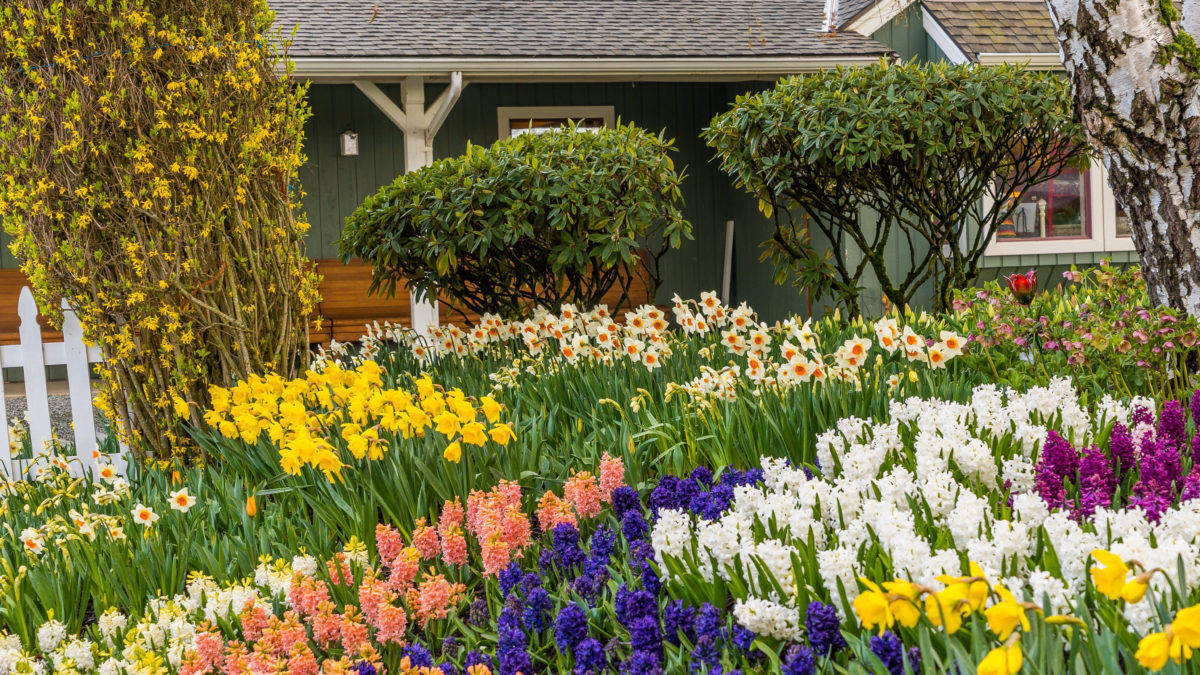
Which leads me to another disadvantage. Because bulbs have single-stalk blooms, you’ll have to plant them closer together in order to achieve a compact rainbow effect. This may get pretty pricey, especially if you’re buying less common varieties to achieve the right color combination.
Another thing to keep in mind is that when the blooms have faded – whether you’re planning on lifting the bulbs or leaving them in the ground – you’ll be left with a relatively bare patch of garden by late spring or early summer. This can be an advantage, especially if you have seedlings growing and ready to go into the ground in the same spot. But for the gardeners who prefer the once-and-done style of gardening, having to plan and plant the same bed twice in a season may be more hassle than a rainbow garden’s worth.
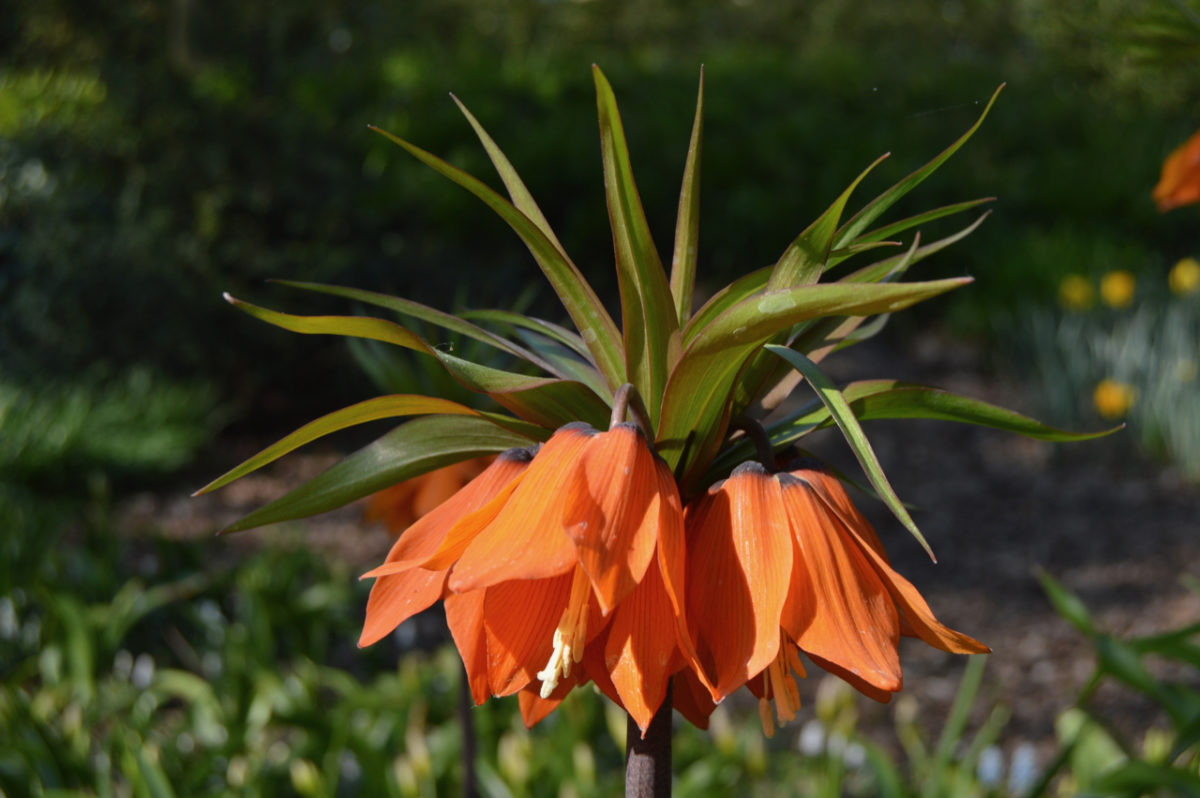
If you’ve decided that the pros outweigh the cons, here are some ideas for a spring bulb rainbow garden. Since a lot of the bulbs come in various colors, you’ll see them repeated throughout the list a couple of times, with a few suggestions of cultivars that match the color.
Red:
- tulips (‘Apeldoorn’, ‘Kingsblood’, ‘Red Proud’, ‘Van Eijk’, ‘Doll’s Minuet’)
- ranunculus (‘Tango’, ‘Tomer Red Spring’, ‘Tecolote Red’)
Orange:
- narcissus (‘Orange Progress’, ‘Orange Queen’, ‘Sabine Hay’)
- tulips (‘Fire Wings’, ‘Sensual Touch’, ‘Orange Princess’, ‘Monte Orange’, ‘Cairo’, ‘Flamboyant’, ‘Brisbane’, ‘Lava Dynasty’)
- crocus (‘Orange Monarch’)
- ranunculus (‘Cloni Dark Orange’)
- fritillaria imperialis (‘Orange Beauty’, ‘Rubra’)
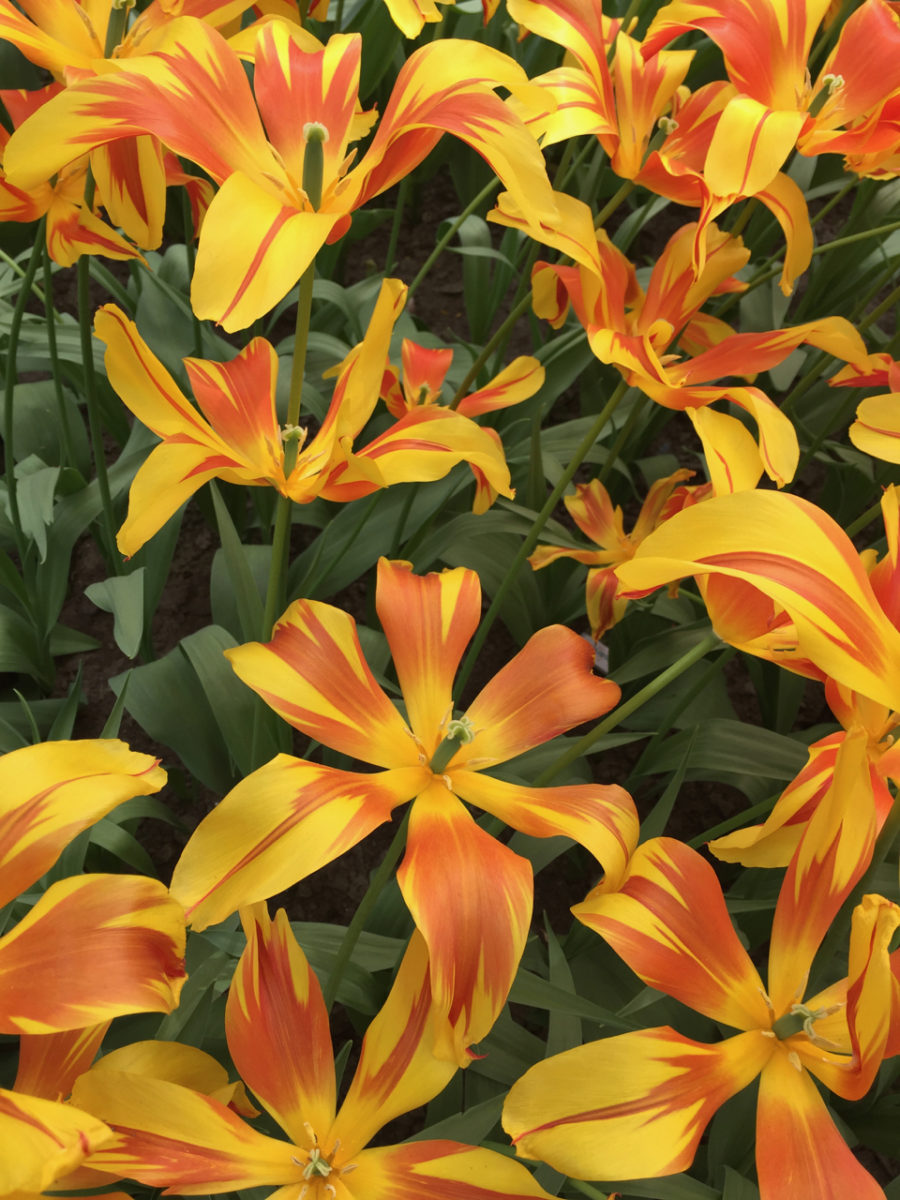
Yellow:
- narcissus (‘Jetfire’, ‘Spellbinder’, ‘Dutch Master’, ‘Tahiti’, ‘Hawera’, ‘Tete-a-tete’)
- crocus (‘Golden Yellow’, ‘Mammoth Giant Yellow’)
Green:
- tulips (‘Green Power’, ‘Spring Green’, ‘Green Star’, ‘Groenland Green’),
- snowdrops (‘Flore Pleno’)
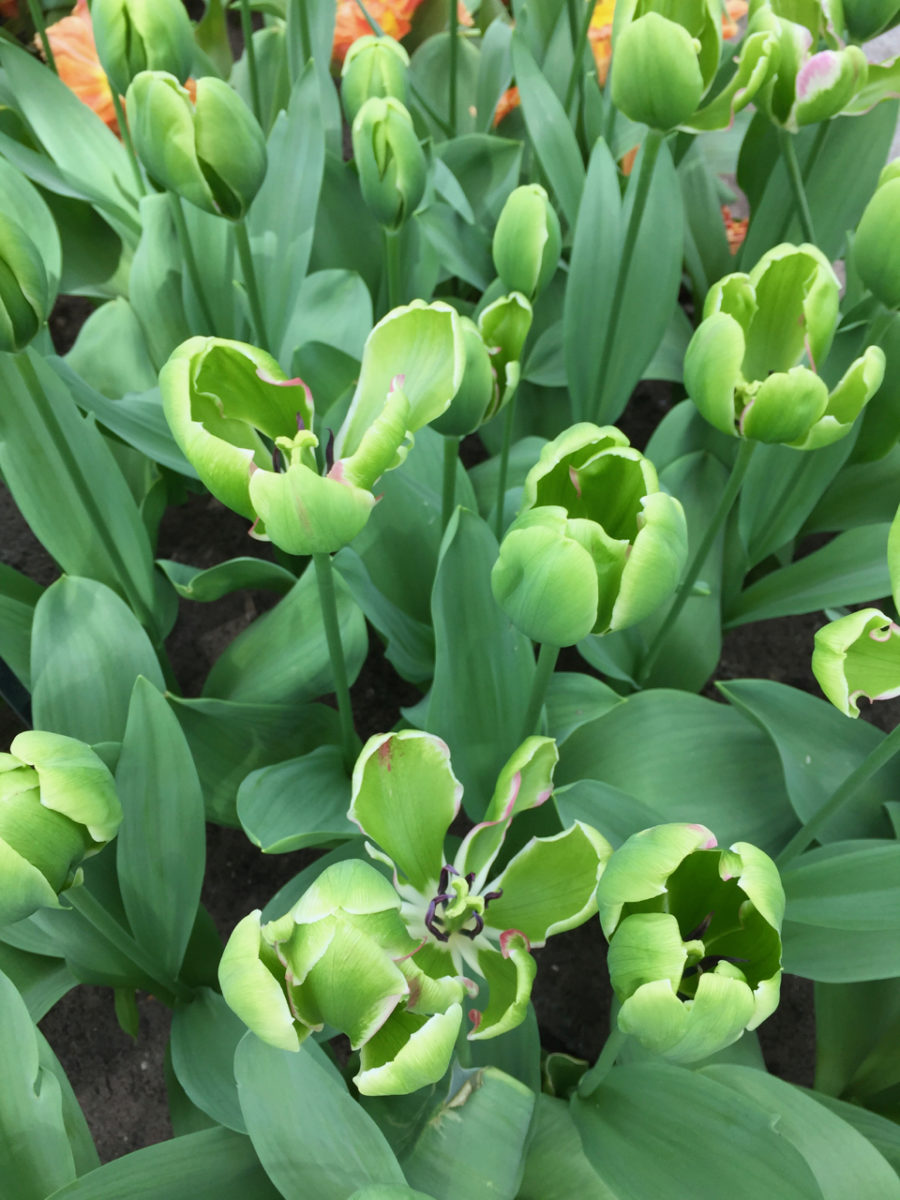
Blue:
- crocus (‘Blue Pearl’),
- Dutch iris (‘Harmony’ and ‘Dark Blue’)
Indigo:
- crocus (‘Firefly’, ‘Pickwick’, ‘Zenith’)
- Dutch iris (‘Discovery’)
Violet:
- crocus (‘Barr’s Purple’, ‘Flower Record’, ‘Grand Maitre’)
- Dutch iris (‘George’)
2. Creating an annual rainbow garden.
Pros: Creating a rainbow garden with annual plants is perhaps the easiest way to accomplish this design, especially if you just buy your annuals as plugs (small plants ready to be put straight into the ground) or as mature bushy plants that you’ll just have to transfer into your beds.
Of course, if you’re extremely organized, you can also plant your annuals from seed to keep your gardening budget on the lower side. Plants such as marigolds, nigella and California poppies can easily be grown from seed – either by starting them indoors or planting them straight into the ground in the garden.
Planting an annual garden is also a good way to test whether you like this design without committing too much to perennials.
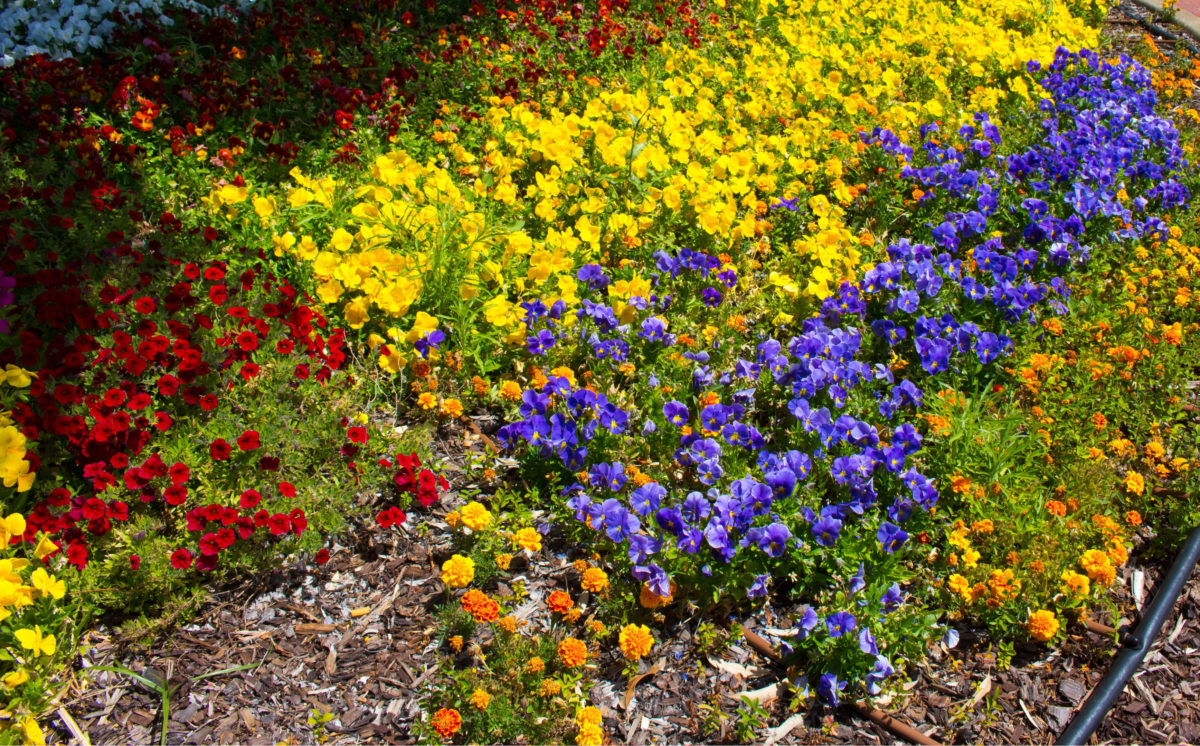
Cons: Keep in mind that planting and replanting an annual garden every year can get pretty pricey. After all, you’re paying for professionals to grow the plants in commercial greenhouses and paying for nurseries to keep the stock looking fresh, not to mention the whole logistics chain between the two. As I mentioned above, it gets cheaper if you choose to sow your own annuals, especially if you save your seed to reuse next season or if you can find a seed swapping group to join in your area.
Here are some colorful plants for your annual rainbow garden design:
Red:
- celosia (‘Twisted Red’)
- cosmos (‘Gazebo Red’, ‘Rubenza’)
- petunia (‘Supertunia® Really Red’, ‘Supercascade Red’, ‘Capri Red’, ‘Aladdin Red’, )
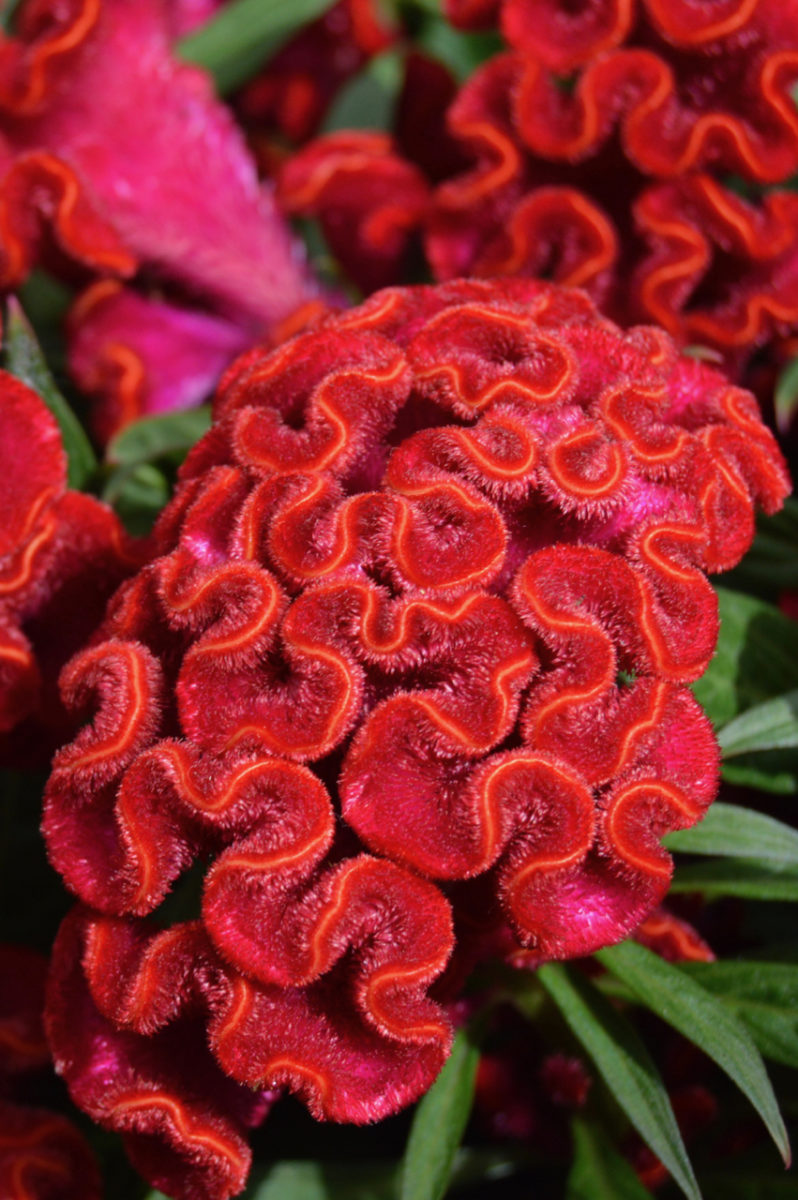
Orange:
- marigolds
- California poppies
- calendula
- zinnia (‘Magellan’, ‘Orange King’, ‘Profusion Orange’)
- calla lily (‘Apricot Lady’)
Yellow:
- celosia (‘Fresh Look Yellow’)
- zinnia (‘Benary’s Giant Golden Yellow’, ‘Profusion Red Yellow Bicolor’)
- sunflowers of all varieties
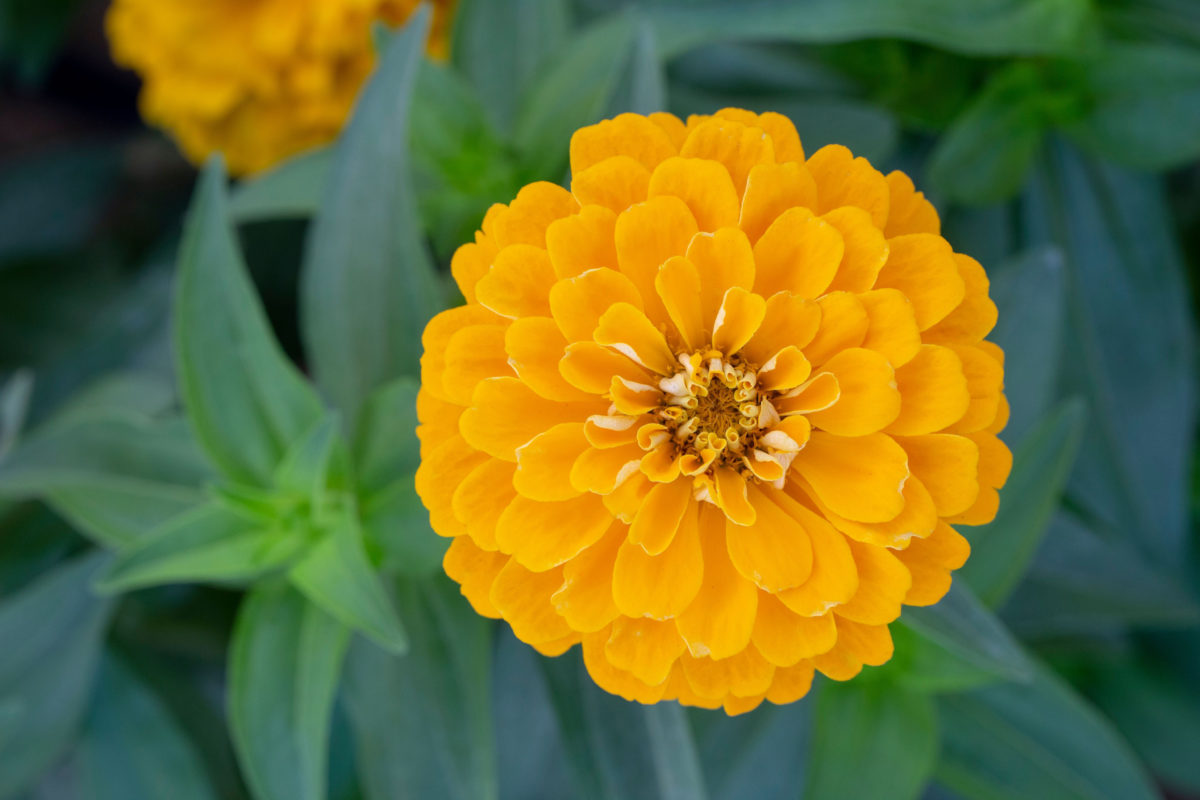
Green:
- celosia (‘Spring Green’, ‘Sunday Green’)
- dianthus (‘Green Ball’)
- cosmos (‘Purity’)
- zinnia (‘Benary’s Giant Lime’)
- bells of Ireland (Moluccella laevis)
- calla lily (‘Green Goddess’)
Blue:
- cornflower
- evolvulus (‘Blue My Mind’, ‘Blue Fescue’)
- delphinium (‘Picolo’, ‘Atlantis’)
Indigo:
- nigella
- bachelor’s button (Centaurea cyanus)
- petunia (‘Wave Blue’)
- lobelia (‘Laguna® Dark Blue’)
Violet:
- browallia (‘Major’, ‘Starlight’)
- agapanthus
- verbena (the bonariensis variety)
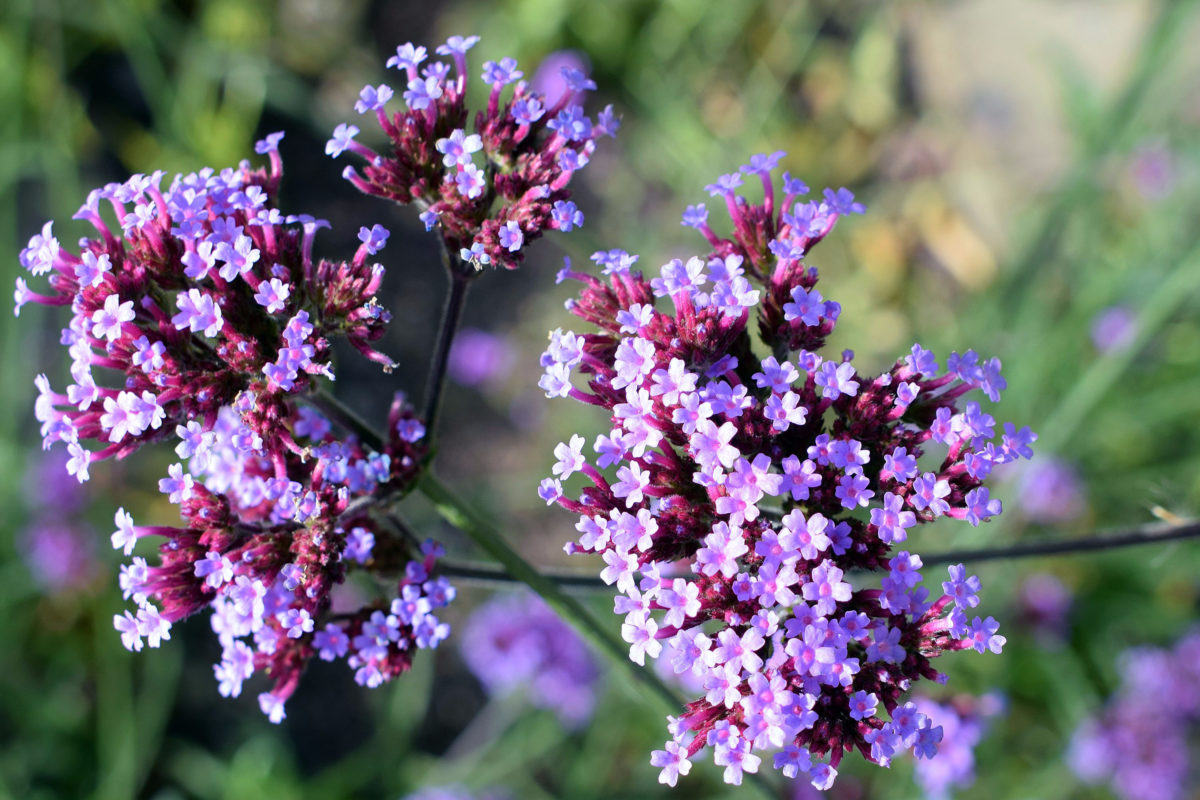
3. Creating a perennial rainbow garden.
Pros: It will be in place for years, so you don’t have to redouble your work or your investment in the years to come. Past the planning stage, it’s the most affordable option.
Cons: It takes a bit of planning and it takes longer to get started. With a perennial garden, self-seeding plants may mess with your design. In this case, you can either deadhead the blooms before they go to seed or pluck out the little seedlings next year if you weren’t quick enough to prevent self-seeding. Or simply embrace the blurred lines and the blending of colors and hues that may result over time.
Keep in mind that some plants that grow as perennials in some climates, may be treated as annuals by people who garden in colder climates. Always check the seed package or plant label for USDA zone recommendations or check your local university agricultural extension for a list of perennials that will do well in your climate.
Here are some perennial ideas for your rainbow garden:
Red:
- lupines (‘Gallery Red’, ‘Red Russell’)
- crocosmia (‘Lucifer’)
- echinacea (‘Firebird’, ‘Kismet’, ‘Salsa Red’, ‘Sombrero Salsa’)
- achillea (‘Strawberry Seduction’)
- monarda (‘Cambridge Scarlet’, ‘Fireball’, ‘Kardinal’)
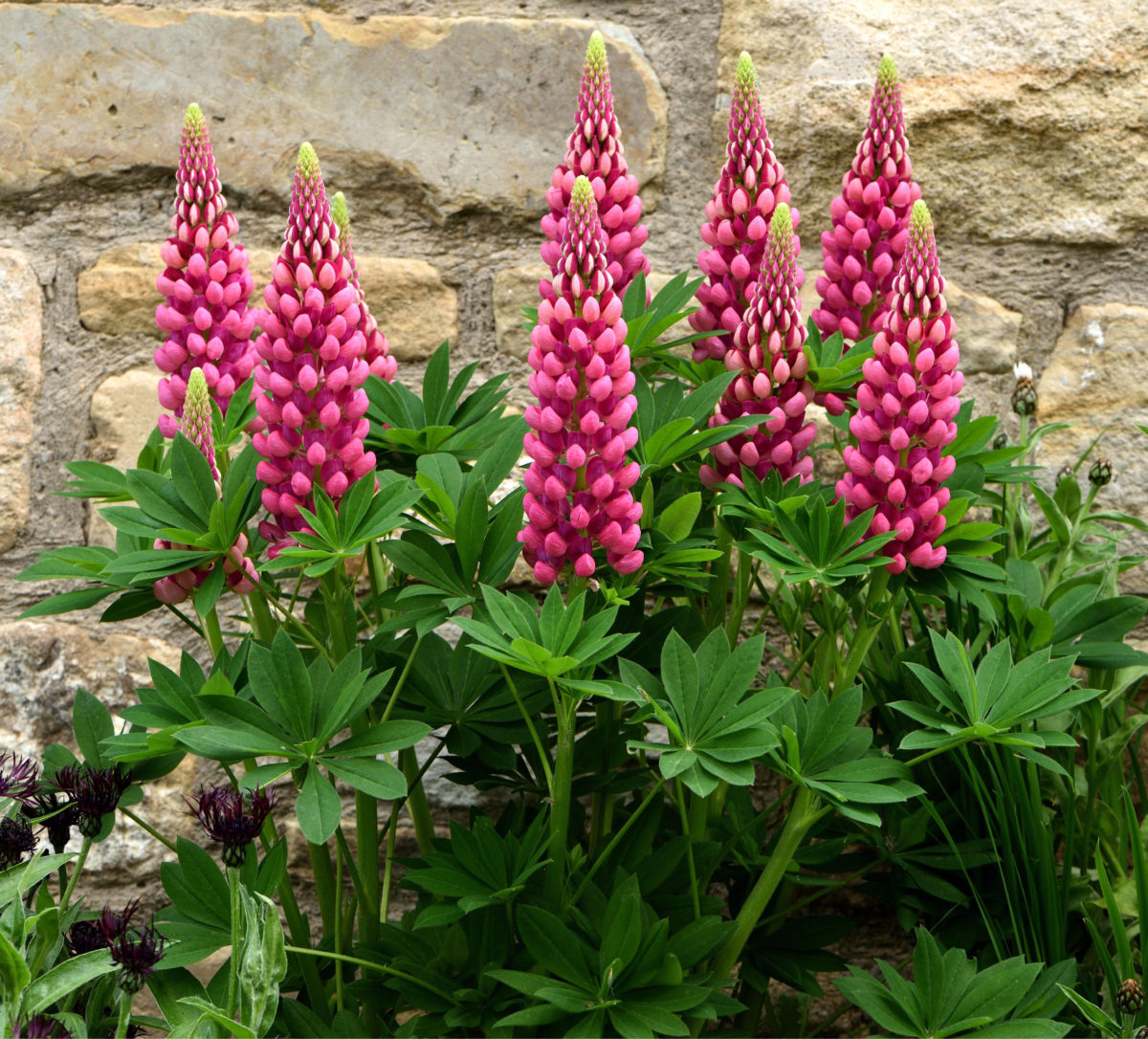
Orange:
- echinacea (‘Sombrero Adobe Orange’, ‘Orange You Awesome’),
- kniphofia
Yellow:
- black-eyed-Susan (Rudbeckia fulgida)
- crocosmia (‘Walberton Yellow’)
- coreopsis (‘Cosmic Eye’)
- ligularia (‘Britt Marie Crawford’, ‘The Rocket’)
Green:
- lady’s mantle (Alchemilla mollis)
- Mediterranean spurge (Euphorbia characias subsp. wulfenii)
- amaranth (‘Green Tail’)
- echinacea (‘Green Jewel’, ‘Green Twister’)
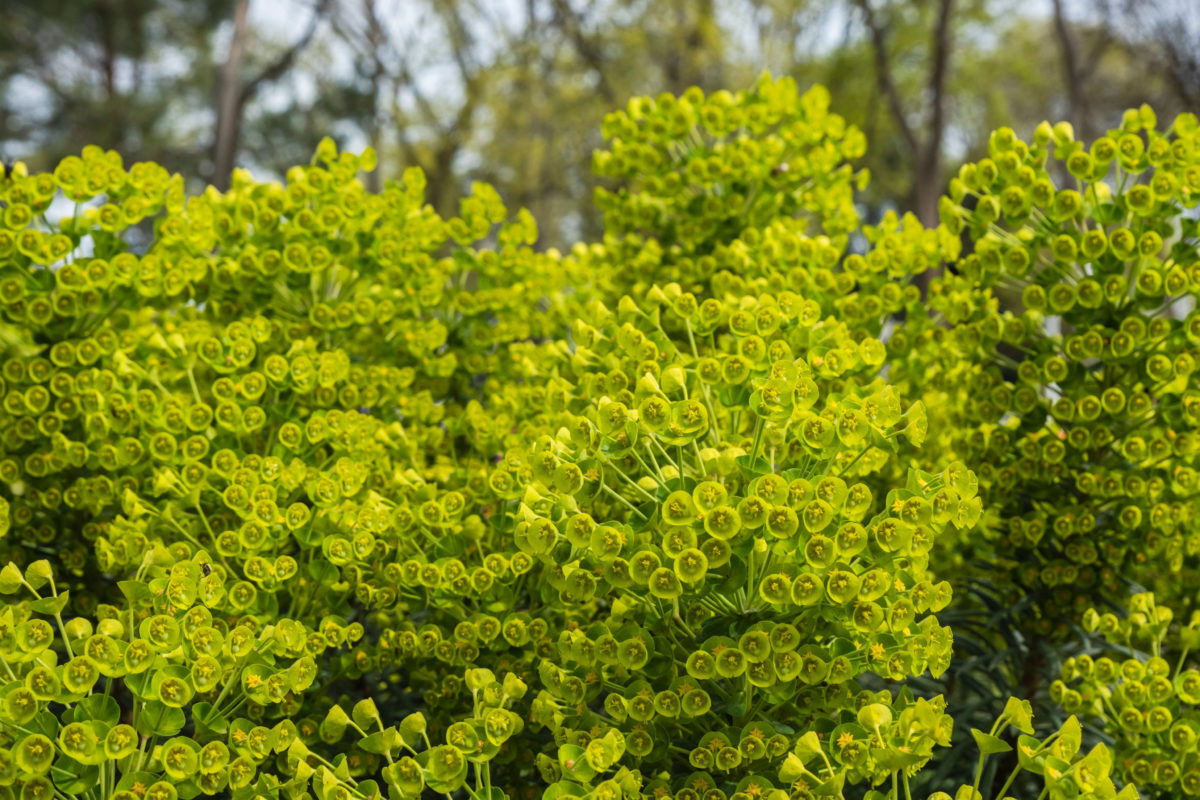
Blue:
- brunnera (‘Jack Frost’)
- echinops
- salvia (‘Black and Blue’)
- Virginia bluebells (Mertensia virginica)
Indigo:
- eryngium (‘Blue Hobbit’, ‘Blue Glitter’)
- baptisia (‘Sparkling Saphires’)
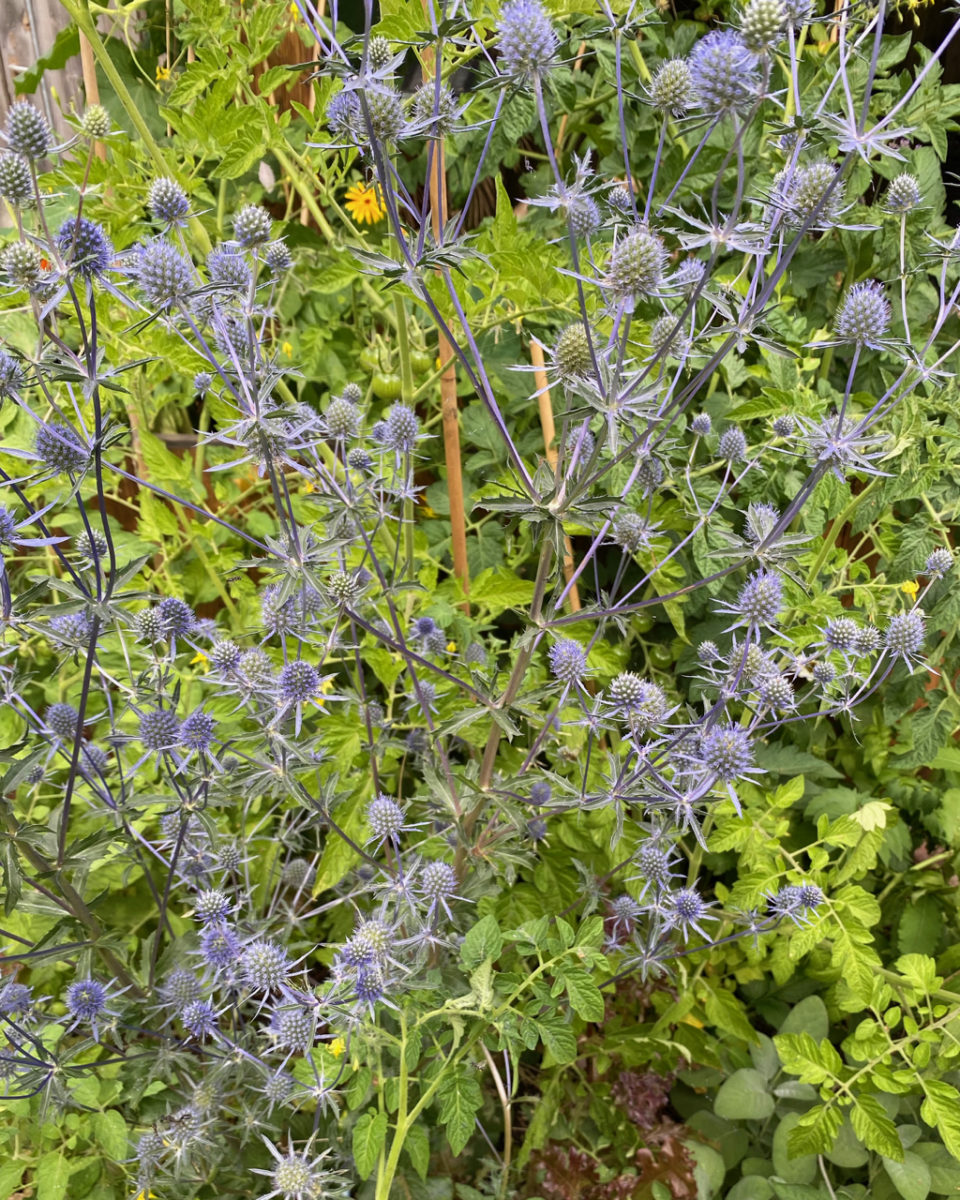
Violet:
- passionflower,
- salvia (‘Caradonna’, ‘Amistad’)
- echinops (‘Veitch’s Blue’, ‘Blue Globe’)
- lupines
Can I combine annuals and perennials in my rainbow garden?
Yes, of course you can. There is nothing stopping you from planting a calendula (orange annual) in between monarda (red perennial) and rudbeckia (yellow perennial). The trick is to remember that your calendula will die at the end of the season and you need to collect the seeds and reseed them the following spring if you want to achieve the same look next year.
This guide is only meant to pique your curiosity about rainbow gardens; but if you let your creativity roam, there are countless ways to make the rainbow garden work for your space and your budget.
